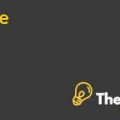Revitalizing Dell Case HELP
Introduction
The case is aimed to shed light over the strategic process to revitalize Dell Inc. From the beginning of the 1990s through the middle of the 2000s, Michael Dell with his business prospered in the personal computer sector. Dell Inc.'s revenue increased by $3.5 billion in 1993, to $56 billion in the year 2005, making it the largest PC manufacturer in the world. At the same time, net income increased from $149 m to $1.2bn. Dell among the top vendors continuously recorded favorable margins on PC sales for several of those years, earning mostly on PCs than many of its principal competitors put together.
A large part of Dell's success can be attributed to its "Direct Model": although competitors sold often via distribution, retailers, and merchants, Dell accepted purchases directly from customers, produced computers as per their specifications, and distributed machines directly to customers. Competitors researched the Direct Model and imitated a number of its components, which led one observer to declare that "everyone in PCs aspires to be like Mike." Michael Dell and other industry experts were perplexed as to why no rival could match Dell's performance up until the mid-2000s. At the age of 39 and with a net wealth of over $14 bn, Michael Dell resigned as CEO in July 2004 and took on the role of chairman after hand-picking his replacement. (Rivkin, 2010)
Problem Statement
For more than a decade, Dell Inc.'s lauded Direct Model helped define prosperity in the personal computer sector. But in the middle of the 2000s, the business started to struggle. Year 2009 will require Michael Dell and his senior leadership team to ascertain the causes of the Direct Model's failure and the best course of action for reviving the business.
Situational Analysis
In the beginning of our analysis we would firstly evaluate the performance of the company with regards to Balance Score Card. A Balanced Score Card (BSC) is a strategic indicator used to detect, enhance, and manage a company's numerous operations and outcomes. The BSC evaluates the performance with four business perspectives as under.
Balance Score Card for Dell
Finance: First we would evaluate the company’s performance for the year 2008 with regards to financial perspective. In order to do so, we would require to analyze the financial ratios of the company.
Gross margin: In the year 2008, the company has a gross margin of 17.9 which has eventually decreased from 22.3% in the year 1992. This eventual decline in the company’s gross margin is not at all a good indicator for the company’s performance as it is showing the declining efficiency of the company to generate the output after accounting for its direct costs.
SG&A / revenue (%): From the data given in Exhibit 7of the case study, it could be seen that the Selling, general and administrative expenses of the company have eventually decreased from the year 1992 to the year 2008 which could be a good sign for most of the companies as it shows the company’s achievement of cutting its costs, but in this case it could be not denied that although the SGA expenses of Dell have declined, they are not balanced by the revenues as the gross margins of the company have declined more rapidly Hence it is not a good sign.
R&D / revenue (%):From the data given in Exhibit 7, it could be seen that the R&D expenses of the company have decreased from 2.1 in the year 1992 to 1.1. in 2008. Although the spending of money in the R&D does not provide any guarantee for the profitability to any company, but the companies that come under the category of technology and innovation like Dell, need to invest significantly in R&D to keep them up to date with the latest innovations in the town and survive in the game. Hence the declining investment from Dell in its R&D is not a good sign.
Operating Profits: The operating margin shows how effectively a business can turn a profit from its primary activities. The operating profits of the company have rapidly decreased from the maximum of 11.2% in the year 1998 to 5.2% in the year 2008. It is not a good indicator to the company. (Vest, J. 2022).
Net Profit Margin: It is one of the most crucial and important measures of the business's overall financial condition. It provides the amount of net income generated as a proportion of the revenues received. The net profits of the company have rapidly decreased from the maximum of 8% in the year 1998 to 4.1% in the year 2008. It is not a good indicator to the company.
Asset turnover ratio: In this ratio, business's revenues are compared to the value of the assets using the asset turnover ratio. The assets turnover ratio or return on assets ratio can be used to assess how effectively a business uses its assets to produce income. This ratio of the company have eventually decreased from the maximum of 2.7% in the year 1998 to 2.3% in the year 2008. It is not a good indicator to the company. (Qamara, T., 2020)
Asset to Equity Ratio: This ratio shows the percentage of a company's assets financed by shareholders. Because it should keep higher prices in order to generate the cash inflows that are necessary to pay for its debt, a company that has a high asset turnover ratio is more vulnerable to pricing strategies used by rivals. This ratio of the company have eventually increased to 6.2% in the year 2008. It is not a good indicator to the company.
Return on Equity (ROE):Return on equity (ROE) is obtained simply by dividing net income with equity. Since the company’s ROE has increased from 27.6 in 1992 to 58 in the year 2008. Hence, it is a good performance indicator to the company.
Days of Inventory: A lower DOI indicates improved performance for the company. In theory, this indicates that the business is utilizing its inventory more effectively and frequently, which could lead to a rise in profit. A high DOI value, on the other hand, indicates that the corporation is having trouble moving its stock. Since the company’s DOI have rapidly decreased from 71 days in 1992 to 6 days in the year 2008. Hence, it is a good performance indicator to the company.
Internal
When it comes to improving its internal business viewpoint, Dell is making some strides. The company sought to save an estimated $3 billion annually. In order to achieve this, Dell closed its desktop-PC facilities in Texas and Tennessee, and it expected to do the same in North Carolina in 2010. It established a new facility in India, moved manufacturing from its Irish site to the new Polish facility, and then sold this Polish facility to a major supplier. Dell said in May 2007 that it would shortly sell two desktop PCs at Wal-Mart for less than $700. This was the start of Dell's foray into the retail channel.
Following that, the company struck agreements with additional merchants, including Bic Camera in Japan, Goma in China, Staples in Europe, and Best Buy and Staples in the United States. Executives from Dell claimed that they were extremely picky about the models they would sell in their stores. Dell revised its product line in a related move. For instance, it introduced a series of laptops with vivid colour options in July 2007. These actions will get the organization closer to its highest level of internal efficiency...
This is just a sample partial case solution. Please place the order on the website to order your own originally done case solution.













